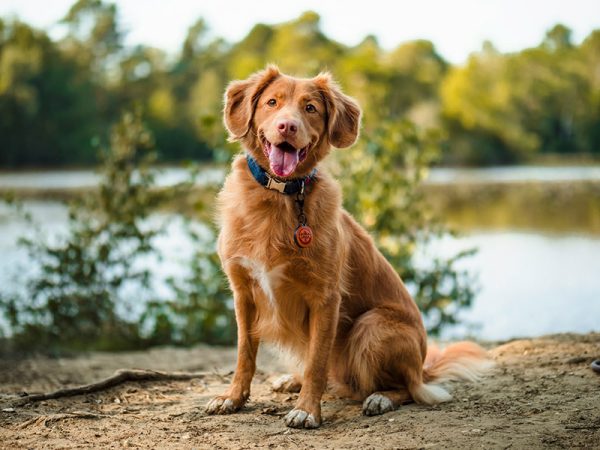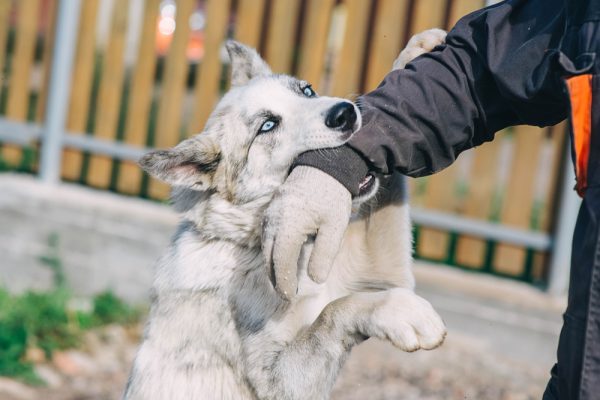In this article
Bratwurst is a tasty sausage that goes hand-in-hand with backyard cookouts. They are easy to throw on the grill, and you can eat them easily while hanging outside and engaging in summertime activities. For those who have dogs, you may wonder if you can let your canine kiddo eat bratwurst right along with you while having summer backyard fun. It’s a legitimate question, but unfortunately, you should not let your dog eat bratwurst.
Let’s find out why and discover other tasty treats you can safely give your dog other than bratwurst.

What Exactly Is Bratwurst?
Bratwursts are an American favorite that actually originated in Germany hundreds of years ago. This popular sausage has made its way to many countries, and it goes wonderfully with staple American side dishes, such as potato salad, baked beans, and beer. They smell heavenly on the gril, but you can also fry them on the stovetop or throw them in the oven.
Bratwursts are fresh-link sausages made from veal, pork, and ground beef. They are well seasoned with many different ingredients, which is where the problem lies as far as feeding them to your dog.

Why Can’t I Feed My Dog Bratwurst?
Bratwursts seem like a safe and tasty treat for your dog, but the reason you shouldn’t give them to your dog is due to the ingredients. Let’s break them down.
1. Salt
Salt is not healthy for humans in large quantities, and it’s especially not healthy for dogs. Regarding bratwursts, they have a high sodium content to preserve shelf life, and this high amount of salt can cause your dog some rather unpleasant issues, such as vomiting and diarrhea if they eat too much of it 1. In fact, a 3.5-ounce serving of pork bratwurst contains a whopping 846 milligrams of salt, with the same portion of beef and pork bratwurst containing 848 milligrams of salt 2. That’s a lot of salt!
Dogs can suffer salt toxicity if they eat too much, which in addition to vomiting and diarrhea, can cause lethargy, incoordination, decreased appetite, excessive thirst and urination, and even tremors, seizures, and death. However, while a dog would have to eat many bratwursts to reach these dangerous salt toxicity levels, you should still avoid giving them to your dog.
2. Fat Content
In addition to the large amount of salt found in bratwursts, they also contain a high saturated fat content, which is not good for a dog’s sensitive digestive system often leading to diarrhea or even pancreatitis. Over time excess fat in a dog’s diet can also cause weight gain and obesity with associated health concerns.
3. Added Ingredients
Not only do bratwursts have high fat and salt content, but they also have added ingredients that can be downright toxic to your dog, like onions and garlic. Part of the Allium family, these seasonings should always be avoided for your dog, no matter the amount in the bratwursts or any other food, for that matter.


What Should I Do if My Dog Eats a Bratwurst?
Your dog would need to consume a good amount of bratwurst to make him sick; however, if they contained onions and garlic, your dog could experience toxicity issues, such as vomiting, diarrhea, lethargy, excessive thirst and urination, and loss of appetite.
When preparing bratwurst, it’s important to keep an eye out on your dog—dogs can be sneaky, and their strong sense of smell will get the better of them. Before you know it, your dog may consume quite a few at one time before you even realize it.
A few factors play a role in how bratwursts will affect your dog. For example, a small dog will likely have more of an issue than a large dog. Your dog’s overall health can play a role in how eating a bratwurst will affect him, and just how much he consumed definitely matters as a whole. If a small piece falls to the ground and your dog gobbles it up, that small amount shouldn’t cause extreme issues, but it’s best to be safe and not allow any to be within reach of your dog, especially if onions and garlic are involved. If you suspect your dog ate a large amount or is showing any signs contact your veterinarian immediately.
If you need to speak with a vet but can't get to one, head over to PangoVet. It's an online service where you can talk to a vet online and get the personalized advice you need for your pet — all at an affordable price!
What Is a Healthier Option for a Tasty Treat?
Dogs want to participate in all the backyard fun too, but it needs to be done safely when it comes to extra treats and goodies. Most dogs love peanut butter, so make a tasty frozen treat of peanut butter and fruit, such as strawberries, blueberries, and raspberries—ensure the peanut butter you use does not contain xylitol. You can find many safe and tasty frozen treat recipes online.
Tips for a Healthy Diet for Your Dog
All dogs should be fed a well-balanced diet with all the necessary nutrients they need to thrive. Dogs need a high-quality protein, such as chicken or fish, along with a balanced amount of carbs, fats, minerals, vitamins, and water. High-quality dog food includes all the nutrients your dog needs, your vet can give you recommendations based on your dog’s age, breed, and any underlying health issues.
Treats should not exceed 10% of your dog’s daily food intake, and avoid dangerous foods, such as garlic, onions, chocolate, and raisins.

Conclusion
With summer around the corner, people will be firing up their grills for backyard cookouts. Bratwursts are easily tossed onto the grill, but if you have a dog, you should refrain from giving your dog this tasty sausage, no matter how much he begs. Ensure you keep the bratwursts out of reach, and make some tasty frozen treats for your dog to enjoy so he can participate in all the fun safely.
See Also:
- Can Dogs Eat Tapioca? Vet-Reviewed Facts, Pros & Cons
- My Dog Ate Tea Bags, Should I Worry? Our Vet Answers
Featured Image Credit: Christin Klose, Shutterstock


















